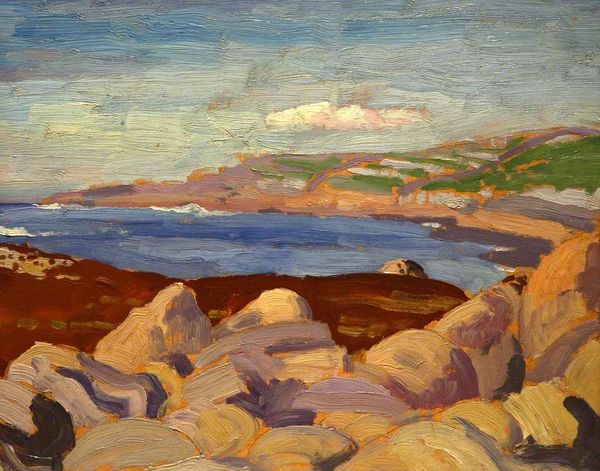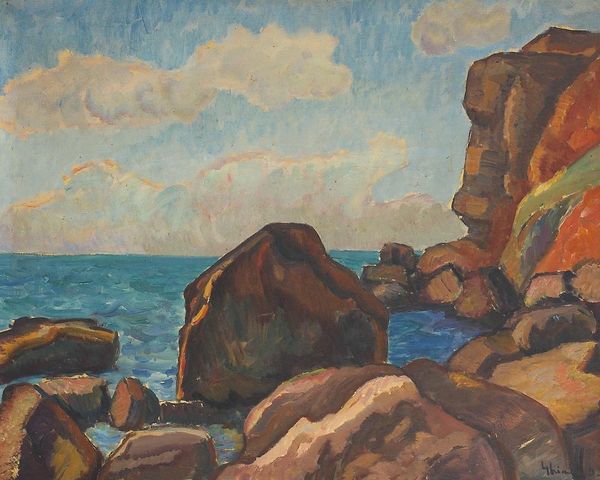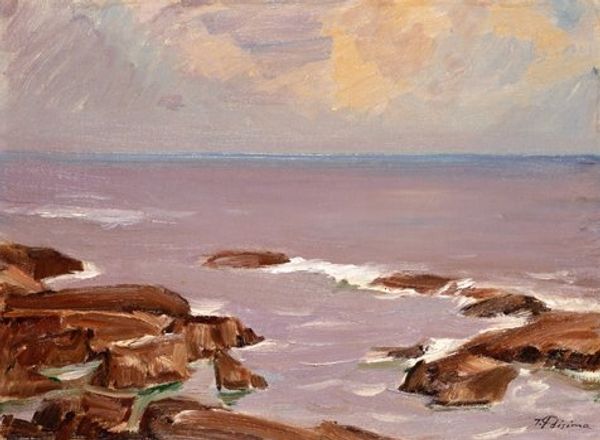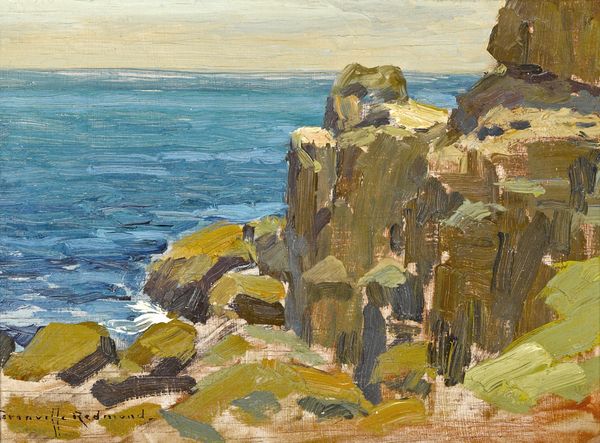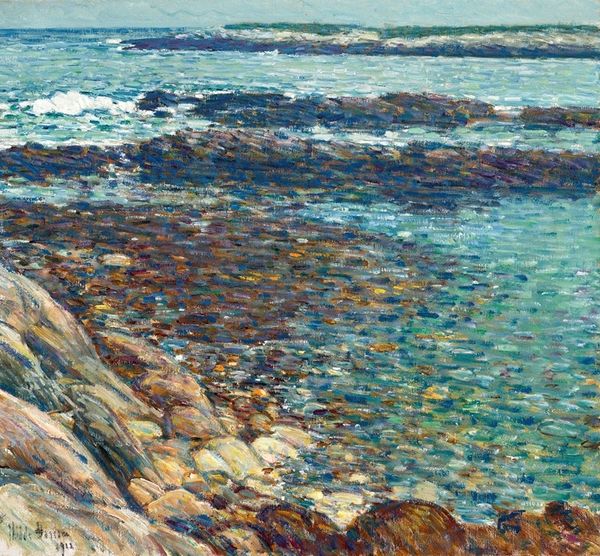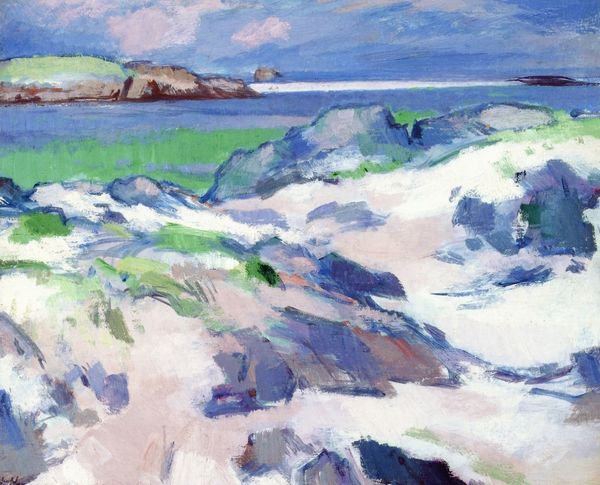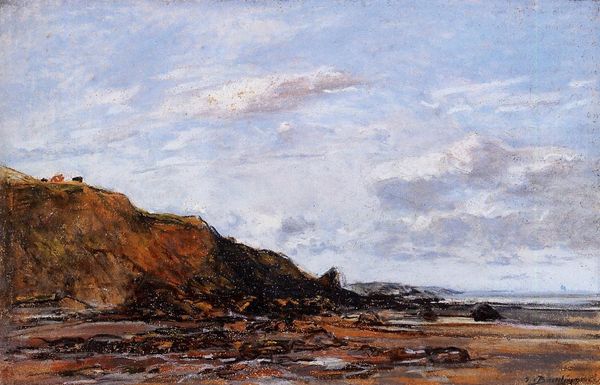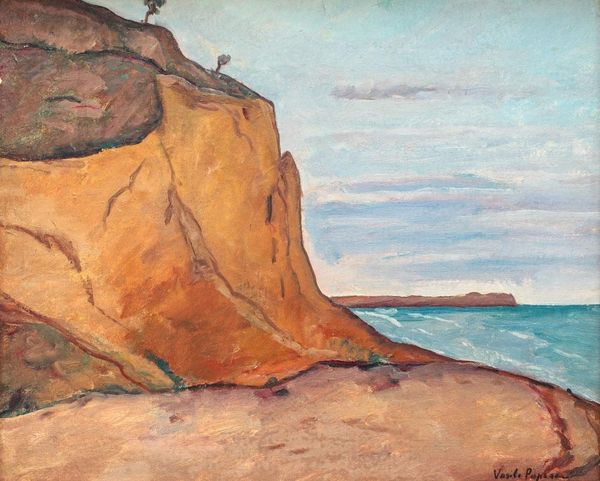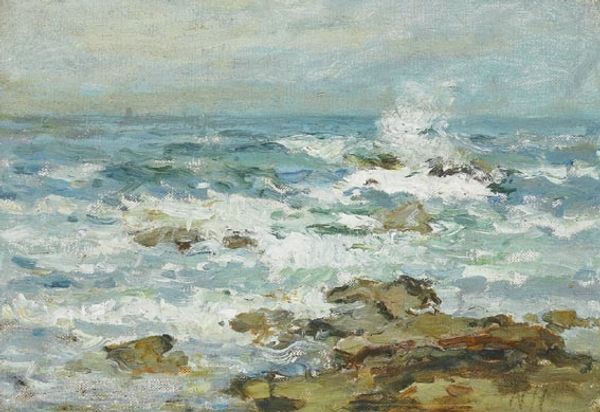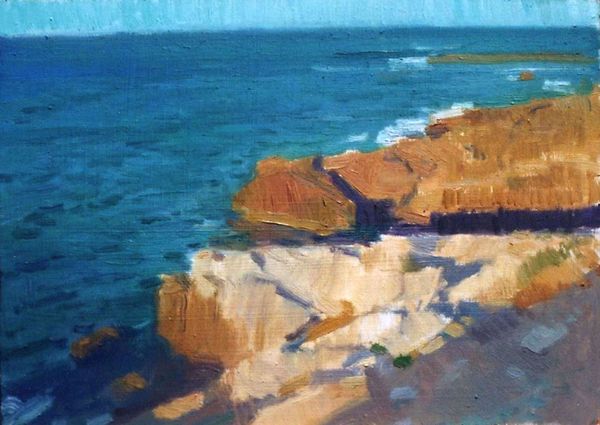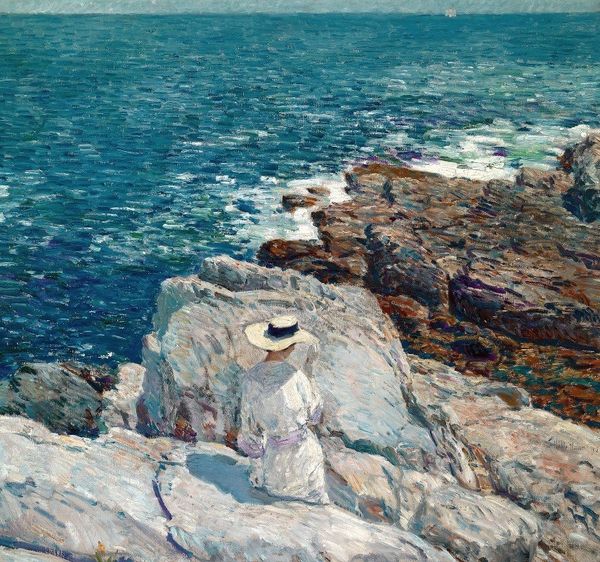
#
cliff
#
abstract painting
#
impressionist landscape
#
possibly oil pastel
#
oil painting
#
rock
#
acrylic on canvas
#
underpainting
#
seascape
#
painterly
#
painting painterly
#
watercolor
Copyright: Theodor Pallady,Fair Use
Curator: Theodor Pallady’s “Pont du Diable (St. Palais sur Mer Cliffs),” painted in 1928, presents a somewhat muted, almost melancholic coastal scene. What are your initial impressions? Editor: My first thought is about the palpable sense of geological weight. The heavy impasto in the rocks is visually arresting, but it speaks to me about the labor involved in capturing this. It is clearly about the land, not just how it looks but what it means to pull resources from such a terrain. Curator: An intriguing observation. If we examine the composition, notice how Pallady has structured the scene, dividing it into distinct horizontal layers: the foreground with its tidal pools, the imposing mid-ground cliffs, and the distant sea fading into the horizon. The geometry created through the layering draws the eye deep into the painting’s vista. Editor: I can see how this is framed; it also strikes me how Pallady has used a limited, earthen palette— ochres, browns, muted blues—to depict the cliffs, tying the rocks to the landscape around them. This wasn’t necessarily the artist trying to represent this site ‘realistically’ so much as conveying something intrinsic to this region. How resources were used and made visible, perhaps. Curator: I concur, it may reflect the historical use of natural pigments. Look at the painterly texture and how Pallady employed short, broken brushstrokes, characteristic of impressionist sensibilities. These techniques capture light and atmosphere, imbuing a sense of ephemeral presence to an otherwise rugged, unyielding landscape. Editor: I see it less about Impressionism and more of what came later—his expressionistic brushwork makes the terrain, and particularly that center, cubic-seeming block, monumental. Almost as if we’re witnessing an environmental reckoning in material form, beyond any sort of formal garden variety picture making. Curator: Your focus brings new nuance. Despite the seeming realism, the scene’s composition and brushwork evoke subjective emotions—a poignant nostalgia or perhaps a premonition. Editor: It seems as though this region of France, even then, had this sense of precarity, even the ships off shore... So Pallady might have understood these challenges, even generations ago.
Comments
No comments
Be the first to comment and join the conversation on the ultimate creative platform.
